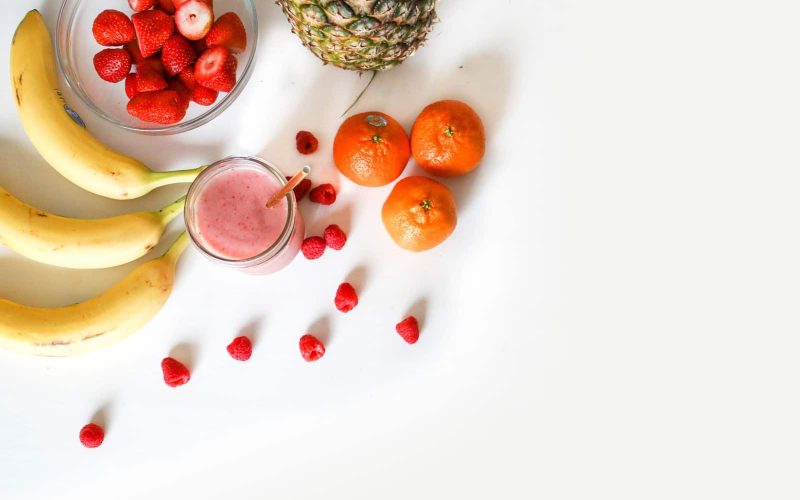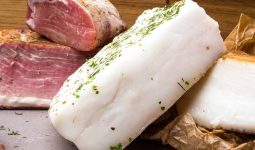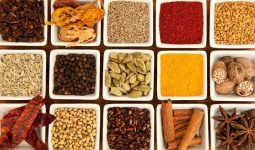Albania has over 4,000 plant varieties, over 1,000 species of fish, and more than 300 types of wild orchids.
Albanian fruit, in particular, offers a wide variety of very nutritious fruits that taste great.
However, look at the top 21 types of Albanian fruits you should try while visiting the country. If you want to know what they taste like and how you can use them while traveling in Albania.
What are Albanian fruits?
The Republic of Albania is a mountainous Balkan country in southeastern Europe. It shares land borders with Montenegro to the northwest, Kosovo to the northeast, Macedonia and Greece to the east, and Croatia and Italy to the west. Tirana’s capital is home to over 300,000 people, making it one of Albania’s largest cities.
However, part of Albania’s long history in trade is from ancient times through today. Merchants who brought Albanian fruits overseas introduced a wide array of Albanian fruits into Albania’s climate.
Thanks in part to its varied geography, which ranges from sea level on its southern coast to snowy peaks, Albanian fruit production abounds across the country. In the northern highlands, it reaches almost 1 mile (1.6 km) high.
Albanian Fruits Basket
Apples
Apple trees thrive in Albanian fruits, and their fruits are available nearly year-round. Apples have high levels of vitamin C, potassium, and antioxidants.
Also, they are low in sugar, so enjoy them as a healthy snack or add them to salads for some crunch. Red apples are also used in many traditional Albanian dishes and drinks, so watch for them while traveling around Albania for Albanian fruits.
Apricots
What makes apricots so unique? They are bright and flavorful summer Albanian fruits that give salads and desserts a pop.
Apricots are a bit sweeter than similar fruits, meaning they make delicious jams, jellies, or preserves.
However, they are also one of nature’s gifts concerning jam-making—imagine what they could do for your toast. As a source of Vitamin A and many other nutrients, apricots are one fruit you can’t go wrong adding to your diet.
Moreover, the thing is, once you start eating them fresh from the tree (or off your counter), it can be hard not to indulge in a few too many.
Albanian Berries
One of the Albanian fruits, its most famous product, Albanian berries, is a premium natural sweetener. They add sweetness and deliciousness to any dish but also have extra health benefits.
In addition to antioxidants that help promote good cardiovascular health, Albanian berries have been known to reduce cholesterol. It is also known to lower blood pressure.
They’re also a source of riboflavin, essential for several bodily functions, including energy production and the proper functioning of cells and organs.
However, the berries themselves are dark purple, similar in hue to blueberries or blackberries. You can either munch on them raw or add them to fruit-flavored drinks like juice or smoothies.
Albanian Blackberries
When summer rolls around, it’s good to pick some Blackberries. They are just as delicious as blueberries but are less well-known in America.
These Albanian fruits are fruity treats that can be eaten fresh from bushes or purchased in grocery stores year-round.
Moreover, it’s important to note that any berries you purchase in the store should be thoroughly washed with hot water and scrubbed with mild soap.
While Blackberries grow on bushes throughout Albania, most grocery stores import them from other countries for distribution. Fortunately, these tiny berries aren’t harvested until mid-summer.
They don’t spoil quickly. So you can enjoy fresh Albanian fruits even if they were shipped from another country weeks earlier.
Albanian Figs
Figs, a Mediterranean Albanian fruit, are considered a delicacy in Albania. They are commonly consumed dried or used as an ingredient in traditional desserts and pastries.
Also, Figs are often associated with good luck and prosperity because they are said to resemble money bags when they’re ripe. Their sweetness pairs well with many different types of cheese and makes for a fun snack any time of day.
Albanian Melons
The Gjirokastra region in Southern Albania produces a sweet, juicy cantaloupe called Kamie-Perbinc, which is both sweet and salty and has a crisp texture. The Albanian fruits are harvested from early July through September in Northern Albania.
However, you can find another popular melon rich in Beta-Carotene called Shqiponja (which means giraffe). Due to its red flesh and beta-carotene content, it is also known as Albania’s Red Gold.
You can eat it raw but usually cooked with sugar or honey. You can also add fruit juice for an extra nutritional boost!
Albanian Oranges
One orange grown in Albania is called the Burlat. Its name comes from its outer layer, which is reminiscent of a porcupine’s quills. It tastes sweeter than any other orange you’ve tried. Albanian fruits can grow up to 15 inches long and 4 inches wide.
However, it can be eaten whole, juiced, consumed alone, or mixed with water. Another one worth trying is known as Java Citrus. It grows in western parts of Albania, like Vlorë County, and tastes sweet.
Albanian Peaches
History states Albanian fruits have grown peaches since antiquity, but not until 1985. They officially recognized a fruit native to Albania.
The standout is one of four fruits protected by PDO status in Albania, which ensures that it is locally grown and processed.
However, peaches are often used in jams, orchard beverages, and even ice cream, ensuring quality and quantity. During harvest season, locals can purchase one hundred percent pure peach juice (made from frozen peaches).
Albanian Pears
Considered one of Albania’s most delicious native fruits, pears are a great source of fiber and vitamin C. Pears originated in Asia and spread across Europe before arriving in Albania, thus becoming a part of Albanian cuisine.
Moreover, Pearls are often used as a dessert, pickled, or juiced. Most varieties have small leaves that help shade their fruit from sunlight, thus reducing sunburns and preserving quality. While you can purchase them fresh at local markets, many prefer canned pear.
Nevertheless, canned pear is also found in most grocery stores outside Albania. With such wide varieties, it’s easy to see why they’re such popular native Albanian fruits.
Albanian Plums
A small plum Albanian fruit that grows in a wide range of colors, from pale yellow to deep purple. They’re usually available in late May and early June. Plums are highly nutritious, containing vitamins C and K and magnesium, potassium, fiber, and antioxidants.
Regarding flavor profile, they’re like a cross between apricots and peaches: tart. They are also sweet with a rich texture and pair well with savory foods such as lamb or feta cheese.
Albanian Grapes
The most prominent and common Albanian fruit is grapes. Grapes grown in Albania are considered some of the best in Europe, and several different varieties grow during different seasons.
One type is popularly used to make wines, while others are primarily eaten fresh or dried as raisins. However, grapes can be enjoyed during any season, no matter how they’re prepared.
It goes well with several foods, particularly meats. Enjoy a handful or serve it alongside appetizers like kallumak (spinach pie) or Cymax ujori (cheese pockets).
Nevertheless, they can also be incorporated into your favorite breakfast dish! The possibilities are endless when enjoying these rich fruits from Albania’s fertile fields.
Albanian Lime
A type of Albanian fruit typically grown in Albania, it is known for its tart and slightly bitter taste. However, they are green in color and have a hard texture when raw. Generally, if you like lemonade, you will enjoy eating Albanian limes. If not, then maybe not so much.
Albanian Gooseberry
Albanian gooseberries have anti-inflammatory properties like other dark, purple fruits (plums, raspberries). Research shows that adding them to a blended drink could help slow cancer cell growth and stop tumors from spreading.
However, does it sound too good to be true? We’re not done yet. Albanian fruits and gooseberries are rich in vitamin C, and the same goes for antioxidants.
Suppose you need an added incentive to include these in your diet. Their flavor is reminiscent of cranberry or raspberry juice—more proof that good things come in small packages!
Albanian Banana
It’s easy to underestimate a banana, especially if you live where they’re relatively abundant and inexpensive.
But anyone who’s ever tried one will tell you that they’re so much more than just a convenient source of potassium. These Albanian fruits, also known as bananas, are sweet, soft fruits with a delicate texture.
Also, it’s suitable for everything from smoothies and shakes to eating on its own or incorporated into desserts. (like our Chocolate Peanut Butter Banana Pudding). What else can we say? Bananas are nature’s gift. (Source)
Albanian Almond
The Albanian fruit almonds are sweet and tart, with a lovely floral aroma. This tasty fruit goes great on pancakes or over ice cream. It is best eaten in early fall or late summer when the peak season is from July through September.
Nevertheless, serve them chilled or at room temperature, whatever you prefer. Remember that refrigerating these little beauties for too long will make them sour and disagreeable. That’s why we suggest eating them shortly after purchase.
Also, eat them before they wilt to maintain their maximum flavor potential. Don’t be afraid if your fridge goes through some natural rot; it’s just part of nature’s circle of life!
Albanian Pomegranate
From dark red to deep garnet, pomegranates are found throughout Albanian fruit. While they may not be native to Albania, they’ve become essential to Albanian culture.
They have their own National Day, But if you aren’t familiar with them, you may wonder why such a fuss is made about one particular fruit.
Moreover, It’s not just because their colors are so pretty but because pomegranates taste great. Pomegranate juice is highly healthy for both your body and brain.
It also has various antioxidant properties, repeatedly shown to help fight cancer, Parkinson’s, and heart disease.
Albanian Prickly Pear
Prickly pears are small, yellow Albanian fruits found on prickly pear cacti. They have a firm texture and spicy-sweet flavor similar to kiwis and mangos. Prickly pears are very perishable, so make sure you use them within a day or two.
However, add them to salads, smoothies, or vegetable sautés. Here is an easy recipe for prickly pear jam on toast.
Also, crackers or as a spread for chicken, pork, or turkey sandwiches. Give it a try! If you can’t find prickly pears, papaya makes an excellent substitute. (Image courtesy Flickr).
Albanian Plum
This plum is sold on a stick but can also be found in jars as part of a traditional pudding. If you’re looking for something sweet, look no further than an Albanian plum. They’re juicy and jam-like, with a concentrated sweetness that resembles marmalade.
However, it’s hard to believe these delectable bites are packed with vitamin C and other antioxidants. They are usually eaten as desserts along with other Albanian fruits such as apples or pears.
Albanian Star Fruit
The thick skin of a star fruit may be intimidating, but don’t let it fool you—the flesh is sweet and flavorful. Inside, you’ll find five distinct segments, ranging from mild to spicy in flavor.
However, like other citrus fruits, the star Albanian fruits contain vitamin C. Try a star fruit if you enjoy sour flavors (think cranberries or green apples). Add it to your next chicken or fish dish for a refreshing twist on an otherwise plain entree.
Albanian Lychee
Albania Lychee is the tiny fruit of a large evergreen tree native to Asia, cultivated in northern Albanian fruits. Lychee is served fresh or dried, and it’s trendy during Ramadan when it’s soaked in cold water overnight before being consumed as part of an evening meal.
Moreover, unlike other types of lychee, these are highly prized for their exceptional taste and texture. You can enjoy it the best during the summer months and early fall. Look for them at your local farmer’s market if you can’t find them at a grocery store nearby!
Albanian Nectarine
Nectarines are Albanian fruits that are popular in Albania and other Mediterranean countries. They’re versatile and delicious Albanian fruits. They can be eaten fresh or cooked, used in pastries or preserves, or made into a refreshing juice.
Nevertheless, nectarines are usually easy to find at local markets and specialty stores. Moreover, They are also easy to cultivate, making them a popular choice for small-scale farmers all over Albania.
Nectarines have large pits that can be difficult to remove with your bare hands; luckily, most Albanians use fruit knives (designed explicitly for peeling peaches) instead.
Conclusion
Albania is well known for its fertile land and bountiful harvests of Albanian fruits. However, the same cannot be said for its culinary culture, much like in other Balkan countries. Many ethnic dishes have remained unchanged over hundreds of years.
However, this is beginning to change as many smaller restaurants open up. People start to experiment with Albania’s vast array of fresh produce.
If you’re traveling through Albania or are just curious about what foods await you. Here is a list of common fruits found throughout Albania








